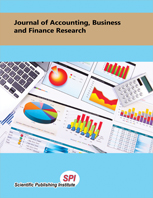Implications of financial leverage for bank profitability in Ghana
DOI:
https://doi.org/10.55217/102.v17i2.709Keywords:
Capital adequacy, Credit risk, Financial leverage, Liquidity risk, Profitability.Abstract
The complexity of the relationship between debt and equity financing models and their impacts on bank profitability in the Ghanaian banking sector cannot be overemphasized. This study examines the impacts of the two financing models on bank profitability. Emphasis is placed on the importance of credit risk, liquidity risk, and capital adequacy when making financing decisions. To measure bank profitability, the research employs two key metrics: Risk-adjusted return on assets (RAROA) and risk-adjusted return on equity (RAROE). These metrics indicate how well banks are performing financially. An inverse relationship between bank profitability (measured by RAROA) and credit risk was among the research findings. This implies that higher credit risk negatively affects profitability. There is a direct link between capital adequacy and RAROE, inferring that as banks increase their lending activities, they need to maintain adequate capital to safeguard their profitability. We recommend a balanced financing approach, which mitigates risks associated with excessive debt while still benefiting from the advantages of asset diversification and strategic growth.


